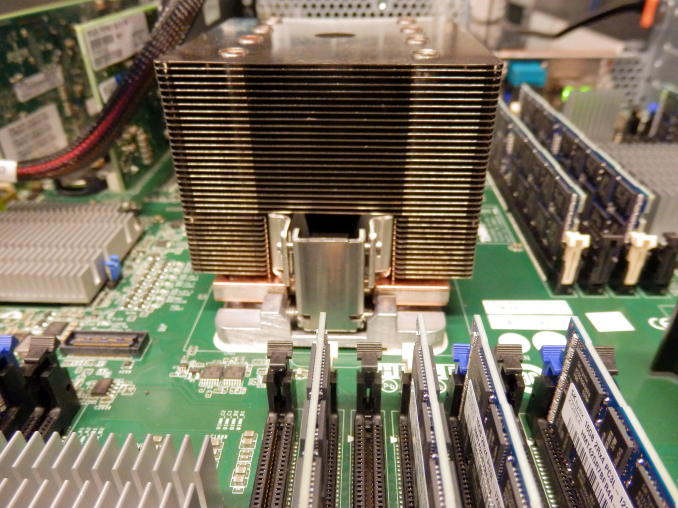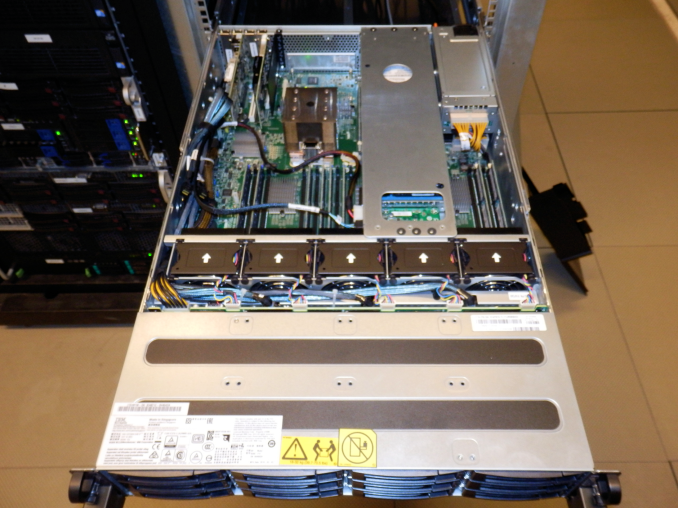Assessing IBM's POWER8, Part 1: A Low Level Look at Little Endian
by Johan De Gelas on July 21, 2016 8:45 AM EST
It is the widest superscalar processor on the market, one that can issue up to 10 instructions and sustain 8 per clock: IBM's POWER8. IBM's POWER CPUs have always captured the imagination of the hardware enthusiast; it is the Tyrannosaurus Rex, the M1 Abrams of the processor world. Still, despite a flood of benchmarks and reports, it is very hard to pinpoint how it compares to the best Intel CPUs in performance wise. We admit that our own first attempt did not fully demystify the POWER8 either, due to the fact that some immature LE Linux software components (OpenJDK, MySQL...) did not allow us to run our enterprise workloads.
Hence we're undertaking another attempt to understand what the strengths and weaknesses are of Intel's most potent challenger. And we have good reasons besides curiosity and geekiness: IBM has just recently launched the IBM S812LC, the most affordable IBM POWER based server ever. IBM advertises the S812LC with "Starting at $4,820". That is pretty amazing if you consider that this is not some basic 1U server, but a high expandable 2U server with 32 (!) DIMM slots, 14 disk bays, 4 PCIe Gen 3 slots, and 2 redundant power supplies.
Previous "scale out" models SL812 and SL822 were competitively priced too ... until you start populating the memory slots! The required CDIMMs cost no less than 4(!) times more than RDIMMs, which makes those servers very unattractive for the price conscious buyers that need lots of memory. The S812LC does not have that problem: it makes use of cheap DDR3 RDIMMs. And when you consider that the actual street prices are about 20-25% lower, you know that IBM is in Dell territory. There is more: servers from Inventec, Inspur, and Supermicro are being developed, so even more affordable POWER8 servers are on the way. A POWER8 server is thus quite affordable now, and it looks like the trend is set.
To that end, we decided that we want to more accurately measure how the POWER8 architecture compares to the latest Xeons. In this first article we are focusing on characterizing the microarchitecture and the "raw" integer performance. Although the POWER8 architecture has been around for 2 years now, we could not find any independent Little Endian benchmark data that allowed us to compare POWER8 processors with Intel's Xeon processors in a broad range of applications.
Notice our emphasis on "Little Endian". In our first review, we indeed tested on a relatively immature LE Ubuntu 14.04 for OpenPOWER. Some people felt that this was not fair as the POWER8 would do a lot better on top of a Big Endian operating system simply because of the software maturity. But the market says otherwise: if IBM does not want to be content with fighting Oracle in an ever shrinking high-end RISC market, they need to convince the hyper scalers and the thousands of smaller hosting companies. POWER8 Server will need to find a place inside their x86 dominated datacenters. A rich LE Linux software ecosystem is the key to open the door to those datacenters.
When it comes to taking another crack at our testing, we found out that running Ubuntu 15.10 (16.04 was just out yet when we started testing) solved a lot of the issues (OpenJDK, MySQL) that made our previous attempt at testing the POWER8 so hard and incomplete. Therefore we felt that despite 2 years of benchmarking on POWER8, an independent LE Linux-focused article could still add value.











124 Comments
View All Comments
tipoo - Thursday, July 21, 2016 - link
They made PowerPC Windows? Source? I remember the Powermac G5s were the early dev kits for the xbox 360 due to the architecture similarity, but I assumed those stories meant they were just working in OSX or Linux on them.thunderbird32 - Thursday, July 21, 2016 - link
AFAIK, the last build of Windows for PPC was NT 4. So, it's been a while.Sunner - Thursday, July 21, 2016 - link
There were early builds of Windows 2000 for the RISC's as well, during the times when it was still called NT5. I had one of those from WinHEC, but alas I lost it when moving at some point. :(yuhong - Thursday, July 21, 2016 - link
AFAIK, the little endian PowerPC mode that NT4 used was killed when they went to 64-bit and is different from today's POWER8 little endian mode that was only recently introduced.Kevin G - Thursday, July 21, 2016 - link
I used to have such a disc for Windows NT4. That disk also had binaries for DEC Alpha and MIPS.BillyONeal - Thursday, July 21, 2016 - link
The Xbox 360 is a PPC machine, and runs a (heavily modified) version of Windows. My understanding is that most x86 assumptions had to be ferreted out to run on Itanium (early) and then on ARM (later).Einy0 - Thursday, July 21, 2016 - link
MS has builds that will run on anything. The real question is why would you want to? These chips are designed from the ground up to run massive work loads. It's a completely different style of computing than a Windows machine. Even MS server OSes aren't designed for this type of work. We are talking Banking, ERP and other big data applications. MS is still dreaming about scaling on that level. Right now their answer is clustering but that comes with it's own obstacles too.abufrejoval - Thursday, August 4, 2016 - link
Well there is always QEMU.And IBM has a much better binary translator from when they bought QuickTransit. That one originally translated Power to x86 for the Mac, then Sparc to x86 for Quicktransit and eventually x86 to Power for IBM so they could run Linux workloads on AIX.
Then what exactly do you mean with Windows (assuming this is actually a reasonable question)?
Server applications or desktop?
.NET has been ported to Linux and I guess could be made to run on Power. A Power runtime could certainly be done by Microsoft, if they wanted to.
I don't see why anyone would want to run Windows desktop workloads on this hardware, other than to show that it can be done: QEMU to that!
BedfordTim - Thursday, July 21, 2016 - link
I was intrigued to see how little effect hyper-threading with your Xeon. My own experience is that it gives a 50% boost although I appreciate there are many variables.Taracta - Thursday, July 21, 2016 - link
Something seems to be wrong with the Mem Hierarchy charts in the Intel L3 and 16MB section.